Depending on where you are in the world, those winter nights can get pretty cold. We snuggle up nice and warm by a fire or under a blanket but where do birds go at night in the winter to keep warm? You will be amazed at how some birds stay warm on cold, cold nights.
During cold winter nights, birds will find refuge in holes or crevices of trees. They will also roost in trees with dense foliage to stay warm and also protected from predators. Ruffed Grouse have a unique approach to staying warm; they tunnel into the snow where the temperature is slightly warmer.
There are some amazing ways in which birds stay warm during winter. Read on to find out how some birds adapt and survive some of the coldest temperatures on Earth.

As an Amazon Associate, I earn from qualifying purchases. Birdwatch World earns commissions from Amazon and similar affiliate programs from any purchases made via links in this article.
Where Do Wild Birds Go At Night To Sleep?
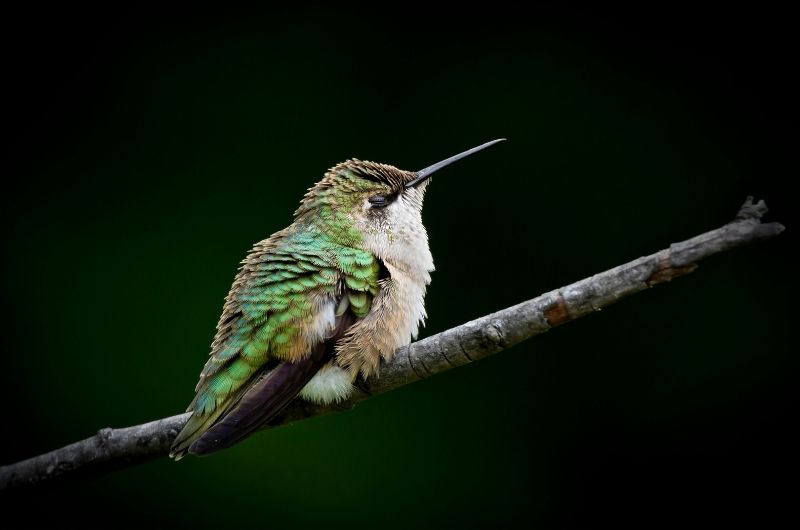
Wild birds sleep in crevices or holes in rocks, trees, sand dunes, or similar places. Keeping warm at night is not their only concern, they also need to stay safe. They will find a place that is both protected from the elements and high enough or deep enough to be out of reach of a predator.
Birds such as Crows, Swallows, Swifts, and Starlings will roost in large flocks. This helps them to stay warm by sharing body heat and also follows the “safety in numbers” rule.
Sleeping In The Nest
A lot of people think that birds sleep in nests at night but this is not true. Baby birds will sleep in the nest until they are developed enough to leave it and fend for themselves. Their parents will sometimes spend the night in the nest with them to keep them warm on a cold night but generally, they will sleep somewhere close by.
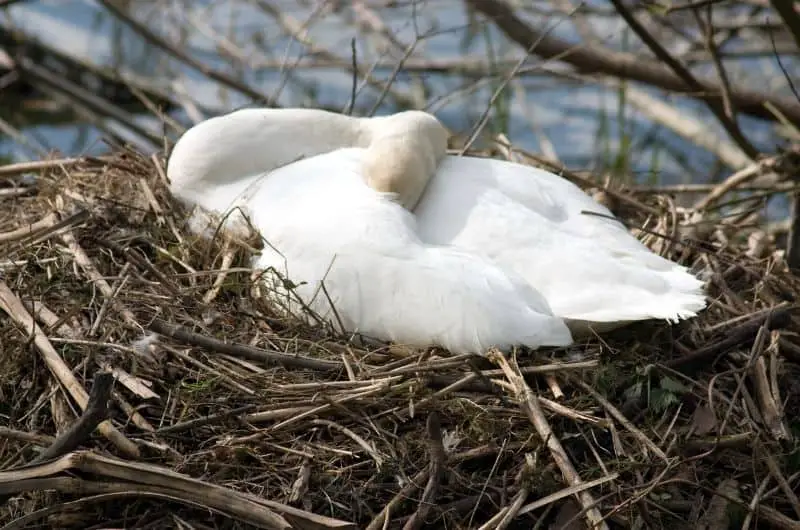
Most species abandon their nests after the young have fledged. This is quite simply the safest thing to do as predators may learn the location of the nest. If the birds do not leave, this will put them and their young in danger.
Read more about how long birds stay in the nest in this post.
Where Do Birds Stay In Winter
We all know that a lot of bird species will migrate during the winter. But what about those hardy little ones that choose to tough it out during the colder months, where do they stay?
Many bird species will migrate for the winter. This is due to low or decreasing resources. Birds like the North American Black-capped Chickadee remain in their territory all year round. Eating extra food, food caching, shivering, and lowering their body temp at night are some ways in which they survive.
Controlling Their Body Temperature

Above I mentioned that Black-capped Chickadees can lower their body temperature in order to stay warm. They are not the only birds that can do this.
You might be thinking “lower their body temperature?…to stay warm?” It seems like a silly thing to do but it is actually quite genius.
Black-capped Chickadees will lower their body temperature anywhere between 10°-15°C on very cold nights. The closer the bird’s body temp is to the temperature of the air, the slower the rate of heat loss will be. This way, they retain their body heat for longer.
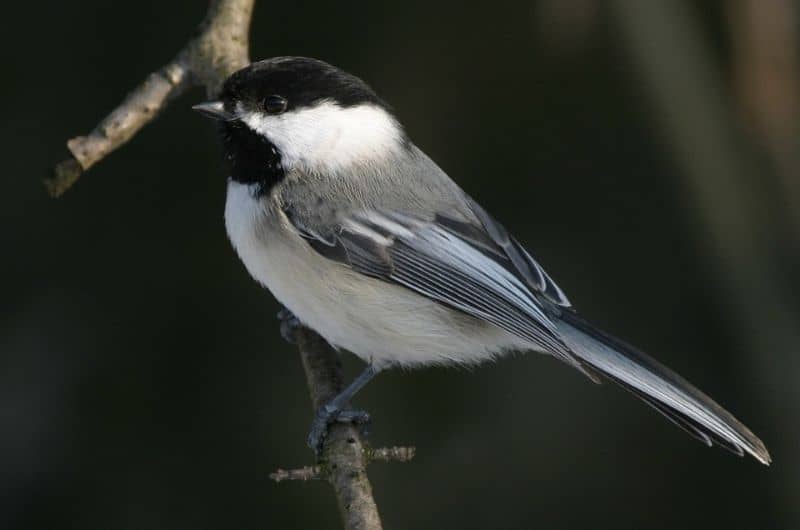
What Is Food Caching?
Food caching or hoarding is the storing of food in hidden locations. This is done when food is plentiful and helps during times when food is scarce. Birds store seeds in crevices of the bark of trees and remember the location of the stores in order to still have a reliable food source during winter.
This type of food storing behavior is common among other animals such as rodents, hamsters, and squirrels. There are two different types of food caching: larder-hoarding, where the animal creates one or more large stores of food, and scatter-hoarding, where the animal spreads individual pieces of food in multiple locations.
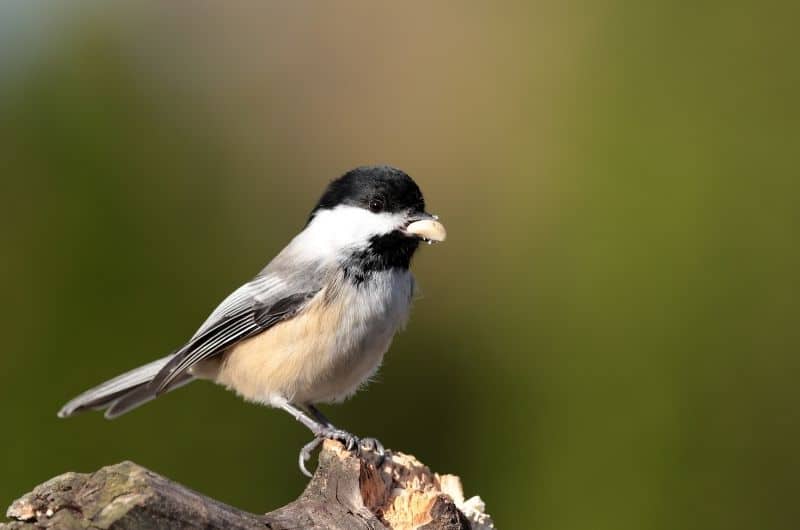
Intelligently, a lot of birds will store food items on the underside of branches so they are easier to retrieve when the branches are laden with snow.
Where Do Birds Go At Night When It Snows?
There are many places birds will go to seek shelter when it snows. Man-made bird shelters, tree hollows, thick hedges, dense foliage, snowdrifts, eaves, barns, and even self-excavated snow tunnels. Woodpeckers will excavate a roost in the rotting snag of a tree and may use this all winter long.
It can get pretty cold when it snows, temperatures dropping to as low as -40°C and birds have some pretty unique ways of staying warm. One way they conserve heat is by puffing up their feathers. This traps pockets of warm air close to their skin and helps them to retain body heat.
Read about all the reasons why birds puff up in this article on my blog.
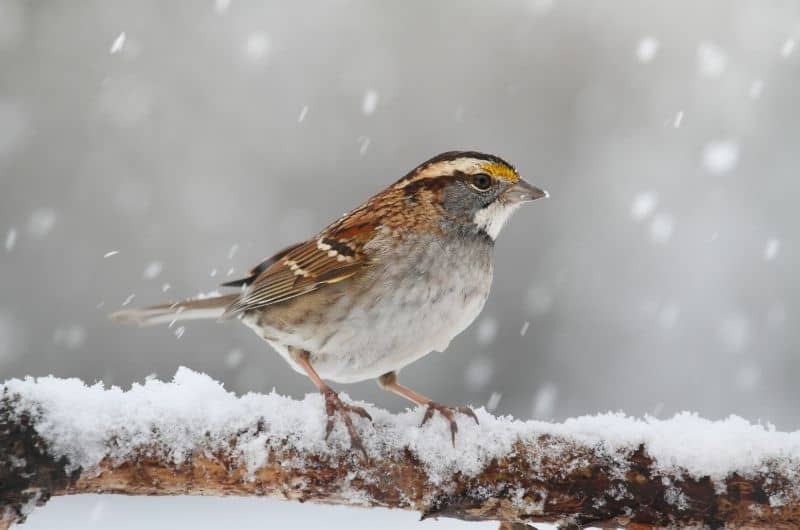
Shivering To Stay Warm
In the same way that we will shiver to stay warm, birds also do this. Shivering burns fat and generates heat, so it can be an effective way of retaining body heat in the snow. Black-capped Chickadees will sometimes shiver for an entire night to keep warm.
How Do Birds Legs Not Freeze?
The temperature plummets when it snows and we humans have to put on many layers of insulating clothing and make sure our arms and legs are covered up. How do our feathered companions survive outside in the snow day in, day out? Why don’t their legs freeze?!
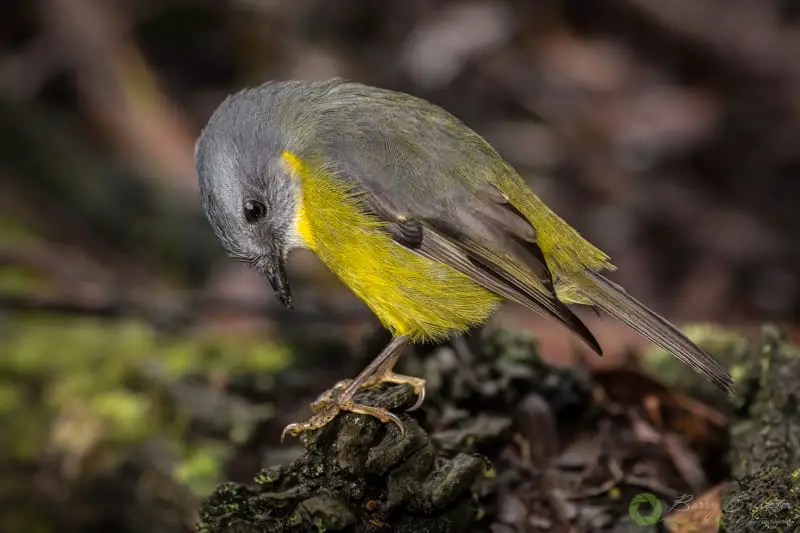
Birds’ legs and feet do not freeze because there is little fluid in their cells; mostly tendons and bones with little muscle or nerve tissue. Birds also have a countercurrent heat exchange system; blood flowing back to the body is warmed by blood flowing from the body. Other factors also help.
In addition to the factors in the above paragraph, birds’ feet and legs are also covered in special scales. These scales help reduce the loss of heat.
Birds are also able to reduce the temperature of their feet down to near freezing by restricting blood flow to their extremities. This way they can conserve heat but not risk frostbite.
Birds will warm their legs and feet by lifting one foot at a time up under their body. They also crouch low, tucking their legs and feet up under their feathers to keep them warm.
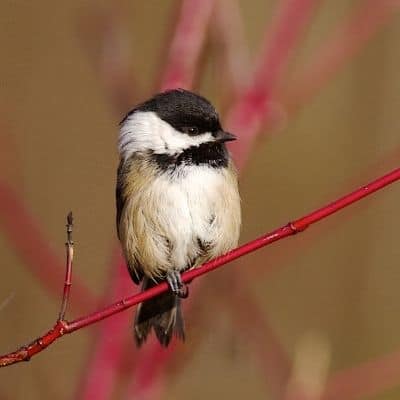
There are also birds such as Snowy Owls and Ptarmigans that actually have feathers on their legs and feet which help to keep them warm.
More Bird Facts
If you are hungry for more facts about birds, try these other posts here on my blog:
- What Time Do Birds Go To Sleep? – An expert weighs in
- Fish-eating Birds – 10 Australian birds that just love that Sushi!
References
- How Do Birds Survive The Winter? – Bernd Heinrich
- How Do Birds Sleep? – Karl S. Kruszelnicki
- How Do Birds Survive The Cold Winter? – Lesley The Bird Nerd
